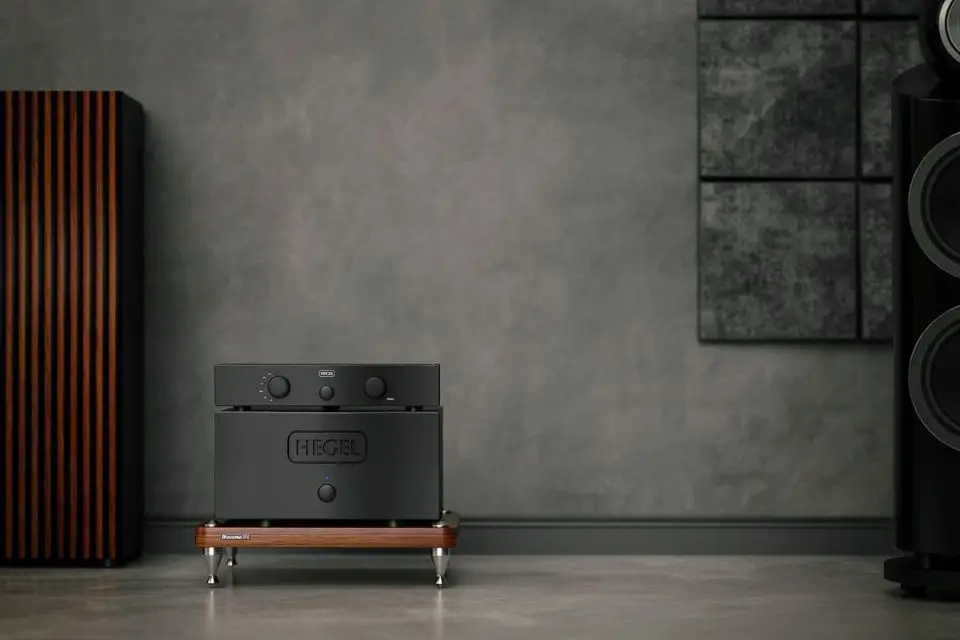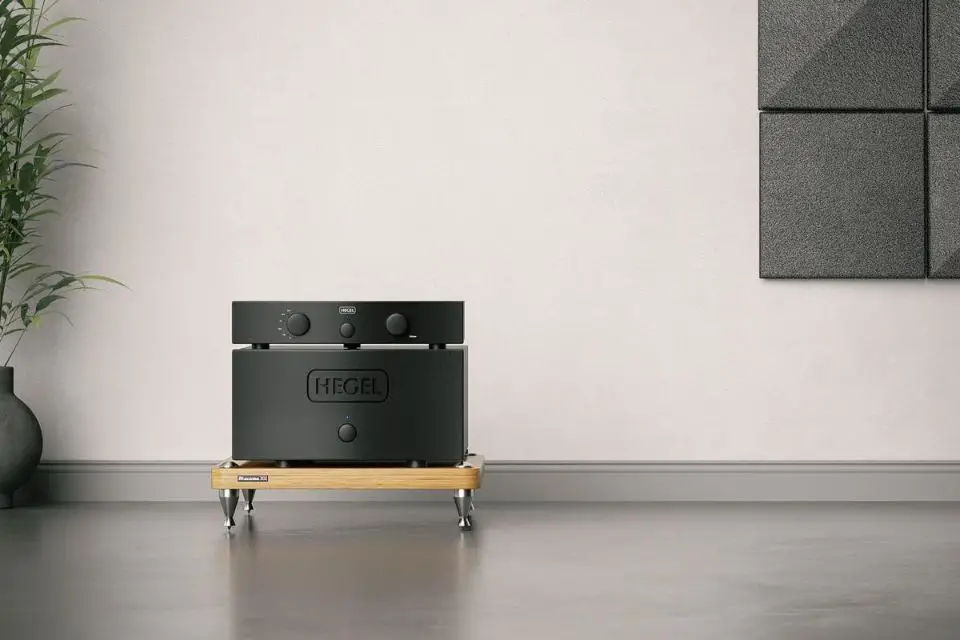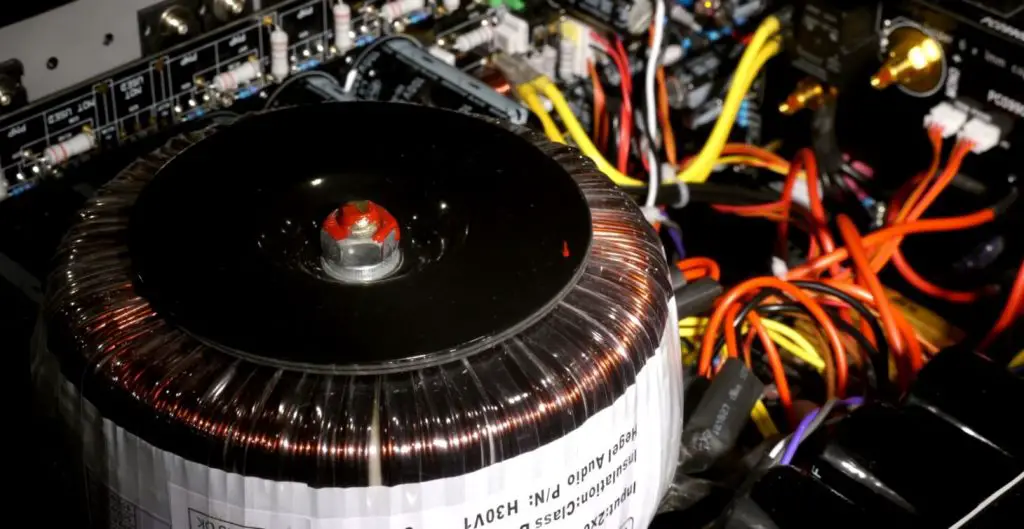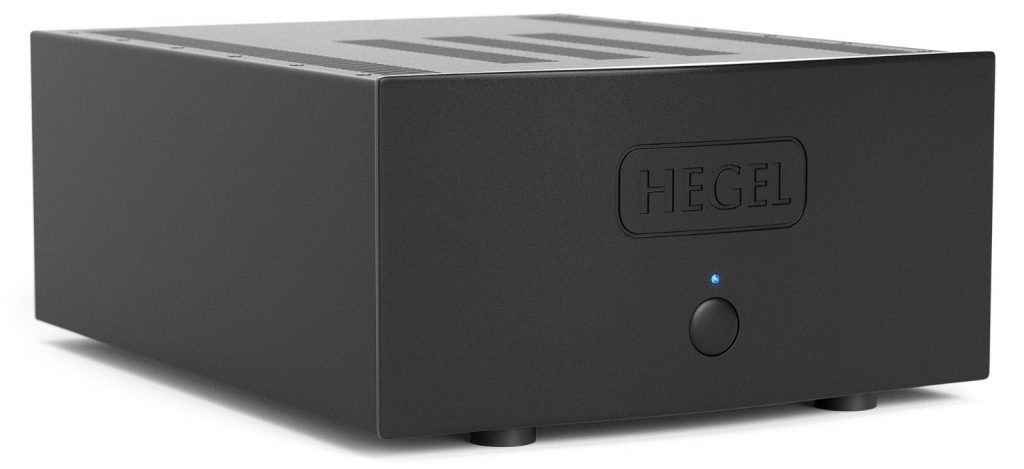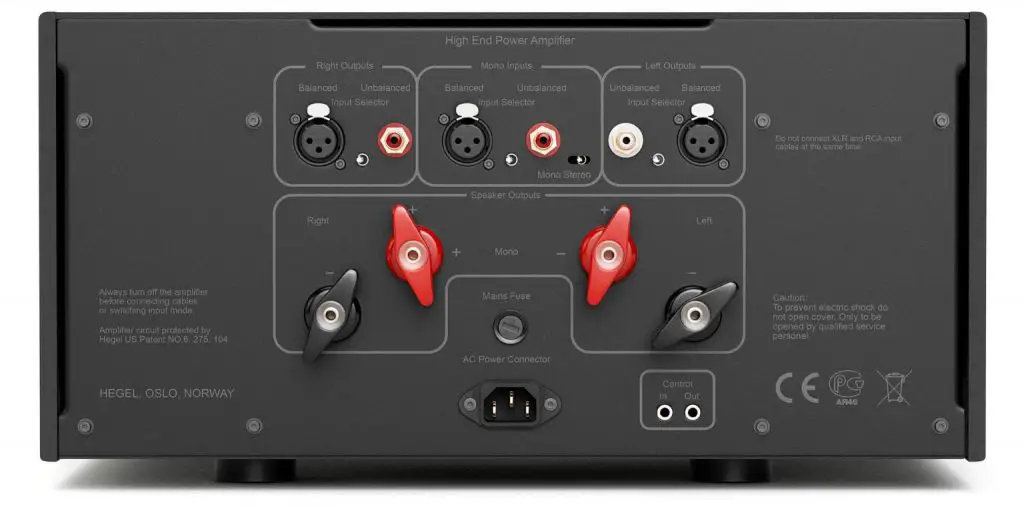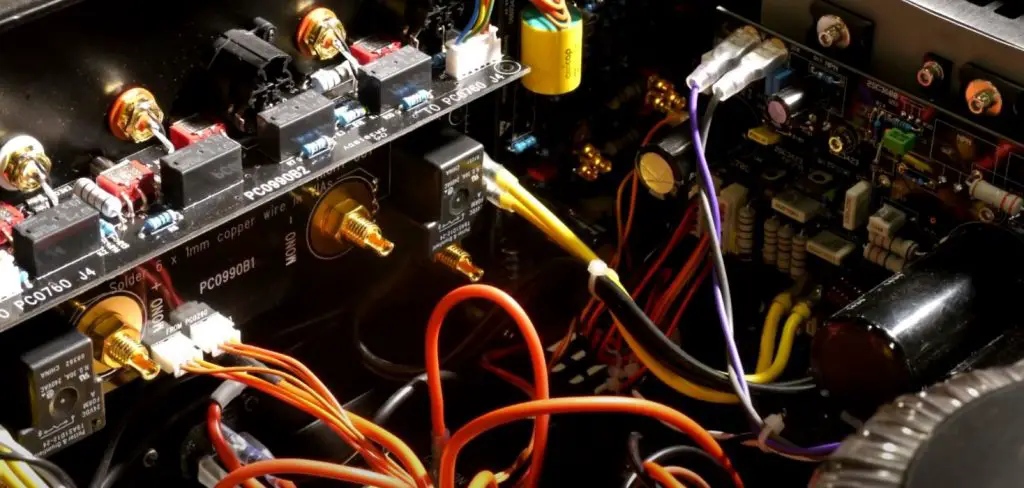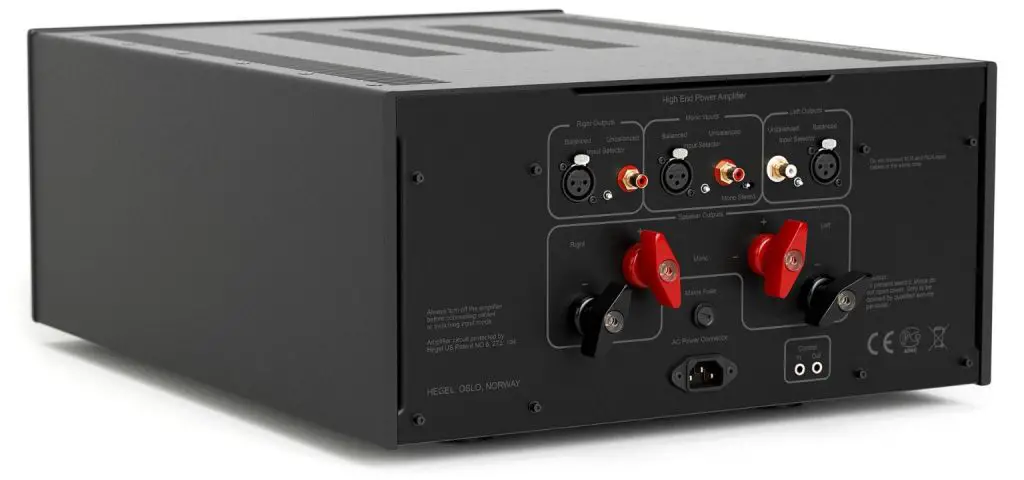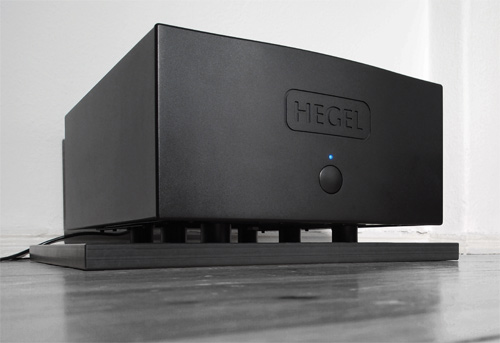Hegel H30 Review
Hegel’s integrated amplifier has won the EISA award many times in Europe, and the latest one is H390 (EISA High-End Amplifier 2019-2020). I have reviewed and listened to more than half of Hegel’s integrated amplifiers, including the flagship integrated amplifier H590. But I never had the opportunity to evaluate Hegel’s flagship power amp, the Hegel H30 power amplifier.
The first Hegel H30 was born in Hegel around 2010. Since its launch in 2011, The Absolute Sound (TAS) still lists Hegel H30 in the Editors’ Choice.
The weight of the H30 is more than twice that of the H590, and its power is impressive. And Hegel’s core exclusive key technology comes to power amplifier circuits.
Hegel H30 can be used as a mono amp with an output of more than 1100 watts (8 ohms). However, the H30 is actually composed of two mono power circuits, and the Mono/Stereo mode can be switched on the back of the machine.
Therefore, the Hegel H30 power amp can be used as a power stage of the channel, with an output power of 350 watts (8 ohms) per channel and a rated output of 675 watts per channel with a 4-ohm speaker.
Is it better to use it as a mono or stereo amp? In fact, each has its own advantages. For example, if the listening space is ample and the speakers are difficult to drive, the H30 can be used as a mono power stage to get more power and dynamics.
On the other hand, if the listening space is not too ample and the speakers are not too difficult to drive, H30 can be set as a stereo amp. The output impedance of the H30 as a two-channel power stage is only half of the mono mode, but the damping factor is twice more.
It is conceivable that the low-frequency control will be pretty good. In this test, I used the H30 as a two-channel stereo power stage.
Technology Feature
All Hegel power amplifiers and integrated amplifiers implement four design concepts: Dual Amp, Dual Power, Sound Engine, and Organic Sound.
Dual Amp divides each channel power amplifier circuit into the voltage amplification for the front and the current amplification for the rear output stage. In the voltage amplifying part of H30, a field-effect transistor that is very sensitive to signal response is used as the amplifying component to shorten the path length of the sound signal as much as possible.
In terms of current amplification, the Hegel H30 amp uses 28 (14 pairs) BJT per channel. Thus, each bipolar transistor (BJT) can output 15 amperes of current for parallel push-pull output, making it a high current output capability.
Dual power is designed to match the power supply circuit of the Dual Amp. Therefore, the amplifier’s operating state will inevitably change the power supply voltage in the high output state.
For example, suppose the voltage amplifier circuit shares the power supply with the current amplifier of the output stage. In that case, the change of the power supply’s working condition will affect the sensitive voltage amplifier circuit and destroy the stability.
Hegel’s Dual Power uses a separate power supply for Dual’s voltage amplifier and power amplifier circuits, reducing distortion and obtaining a higher dynamic range.
A power amplifier circuit must be matched with a power supply circuit with strong power supply capability to ensure stable output under the condition of a continuous working state. The H30 adopts a dual-mono design, and each of the channels is powered by a 1,000VA toroidal transformer.
Based on the stereo mode at 350 watts per channel, and the power utilization rate of the class AB amplifier circuit at the heavy-duty is about 50%.
The 1,000VA per channel power supply capacity of the Hegel H30 power supply is sufficient to allow the unit to provide stable power under the state of continuous maximum power output.
In addition, 16 8,200μF filter capacitors are installed on each channel’s current amplifier circuit board. As a result, the filter capacitors’ total capacity in the power circuit of the two-channel current amplifier plus the voltage amplifier circuit adds up to as high as 270,000μF.
Using a larger filter capacitor capacity can significantly reduce the voltage drop in the high-power output state. Thus, even if it approaches the machine’s output power limit, the dynamics will not be compromised.
The SoundEngine
Most current amplifiers use negative loop feedback to reduce harmonic distortion and expand the frequency response bandwidth. However, unless the amplifying circuit itself is high-speed, the problem of transient intermodulation distortion will arise.
Hegel uses the most critical “SoundEngine” technology to solve the distortion problem. This technology is derived from the US patent Multistage amplifier with local error correction obtained by the creator of Hegel, Bent Holter.
The power amplifier circuit does not use negative loop feedback. Still, it compares the difference between the output signal and the input signal and then uses the Threshold Detector to filter out the distortion.
This distorted signal is inverted and amplified by a high-precision amplifying circuit and injected into the output stage to cancel the original distortion. In this way, the distortion can be prevented from being amplified by the subsequent amplifier stage.
As for Hegel’s “Organic Sound” concept aims to completely reproduce the original recording sound without adding anything, no artificial components, and no sound details will disappear.
Sound Performance
In terms of sound performance, I think the Hegel H30 mono power amplifier has three characteristics. The first is the presence of high-density sounds. So I paid particular attention to listening to the low frequency, mid-frequency, and high frequency in order.
And I soon understood why the H30 sounds so well coordinated. Because it is full and thick from extremely low to high frequency all the entire range, even the tiny sound in the music is presenting well.
The amplifier’s treble, which usually gives the impression of “thick sound”, is more convergent.
H30 has no signs of modification. It is pretty straightforward and neutral, showing the luster and details that the high pitch should have. The full, fine-textured midrange makes the listener feel that the sound is dense and rich.
The low frequency is thick and very strong. However, even if the volume is turned on very high, the Hegel H30 stereo power amplifier still maintains excellent control. The bass performance of high dynamics and high resolution is due to the performance characteristic of high damping factor amplifiers.
The second characteristic of Hegel H30 is a strong sense of the scene. When we listen to music with audio, of course, we hope that we can feel the first-person perspective of the stage and space clearly through the auditory sense as if we were immersed in the environment.
I think players should be very familiar with this situation. Some amplifiers are not suitable for loud listening. In the high power output state, the medium and low audio feels compressed so that the treble sounds a little harsh. While the volume is turned down, the balance is better, but it is too far away from the stage.
H30 has a super driving force that lifts the music lightly. It allows players to choose different listening modes. Take classical music as an example. Even if you listen to the piano, cello, and violin solo repertoire at normal volume, the solid shape and weight of the instrument can make the listener seem to feel realistic.
When playing in a symphony orchestra, Hegel H30 can express the complex and harmonious sound of various musical instrument ensembles with high resolution of the whole frequency range and feel the penetrating power of music in space without increasing the volume.
The sound field has a strong perspective and can easily hear the rich layer from near to far. Since the H30 adopts a dual mono structure, which substantially improves the separation between the left and right channels, users can feel more extension of the sound field outside the two speakers.
Compared with most products, it has a broader sound field and a stronger sense of envelopment, making the listener feel more immersive.
Hegel is suitable for listening to rock, R&B, Rap, hip-hop, electronic music, and all types of pop music! As long as your listening space is soundproofed, the neighbors are friendly, or no one is at home, you can turn the volume up.
H30 has a very superior super-large volume balance, and it does not appear noisy when listening loudly. You don’t have to choose the music for the live concert. Even if it’s just a regular studio record, it still feels like you’re sitting in the center of the first row of the concert, looking directly at the passionate performance on the stage.
Conclusion
Hegel H30 is a transistor amplifier, but it sounds like a high-quality tube amplifier. I think this should be one of the main reasons why many media give H30 a high rating. The characteristics of high-quality tube machines are pretty fast, low frequency is not fat, and high-resolution features are shown with a very delicate texture. It is not like many transistor machines with a bright treble that makes people think that the resolution is high.
The sound is gentle and soft, and there is no artificial tendency at all. Musical instruments and human voices are more realistic. That is the case with the Hegel H30 power amplifier. It has the sound quality of a high-quality tube machine, and I am afraid that there are few tubes with such power on the earth. If there is, I’m afraid the price will be several times that of it.
Hegel H30 Specifications
- Output power: More than 1100 W in 8 ohms
- Miniumum load impedance: 1 ohm load
- Inputs: RCA unbalanced and XLR balanced
- Speaker outputs: One pair of heavy duty gold plated terminals
- Input impedance: Balanced 20 kohm, unbalanced 10 kohm
- Signal to noise ratio: More than 100 dB
- Crosstalk: Less than -100 dB
- Distortion: Less than 0.003% at 100 W i 8 ohm
- Intermodulation: Less than 0.01% (19 kHz + 20 kHz)
- Damping factor: More than 500
- Power supply: 2000 VA dual mono, 270,000 μF capacitors
- Output stage: 56 pcs 15 A 200 W high speed, ultra-low distortion bipolar transistors
- Power consumption: 120 W in idle mode, 30 watts in ECO mode
- Finish: Black and Silver
- Dimensions/weight: 21 cm x 43 cm x 55 cm (HxWxD), weight 45 kg
- Dimensions/weight US: 8.3″ x 17″ x 21.6″ (HxWxD), weight 99 lbs
